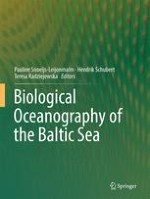2017 | OriginalPaper | Buchkapitel
5. Biological invasions
verfasst von : Sergej Olenin, Stephan Gollasch, Maiju Lehtiniemi, Mariusz Sapota, Anastasija Zaiko
Erschienen in: Biological Oceanography of the Baltic Sea
Verlag: Springer Netherlands
Aktivieren Sie unsere intelligente Suche, um passende Fachinhalte oder Patente zu finden.
Wählen Sie Textabschnitte aus um mit Künstlicher Intelligenz passenden Patente zu finden. powered by
Markieren Sie Textabschnitte, um KI-gestützt weitere passende Inhalte zu finden. powered by
